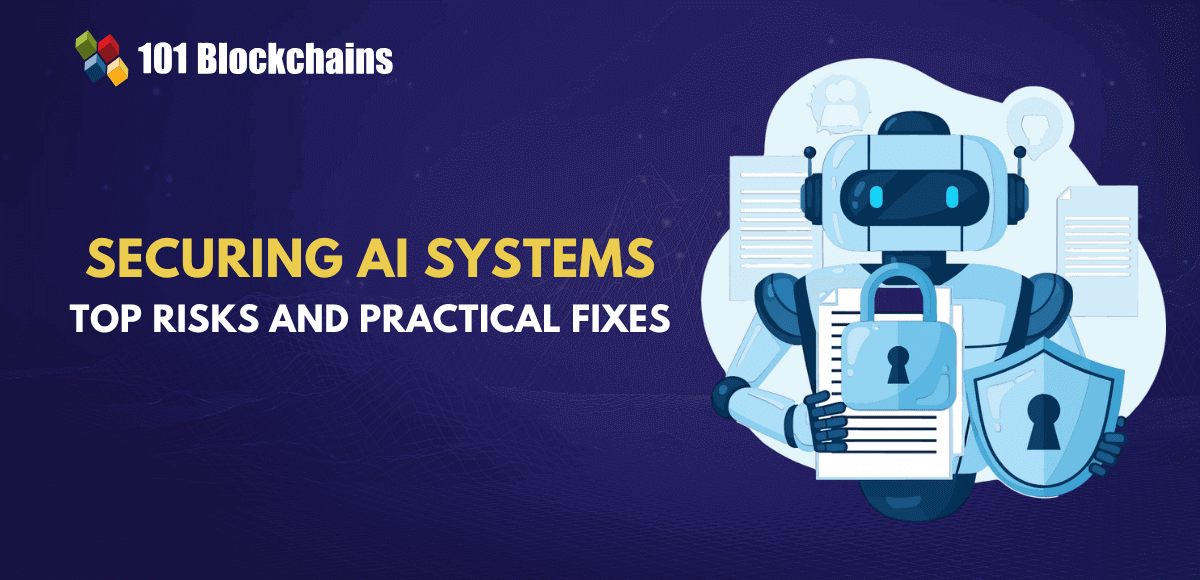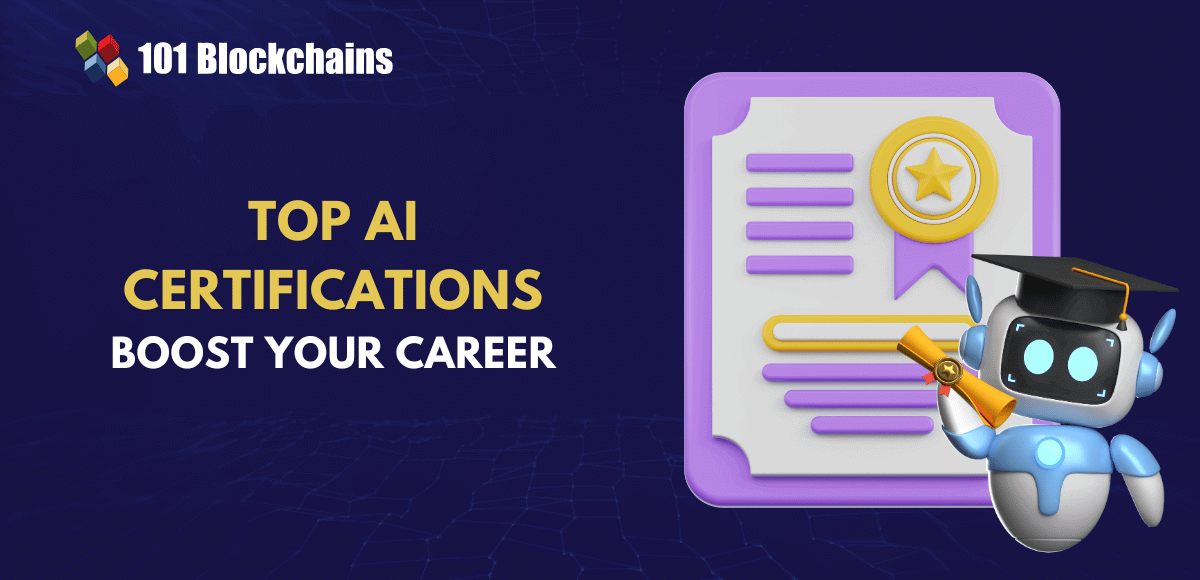Learn how blockchain truly works, master key definitions, and uncover what makes smart contracts so "smart." Dive into the fundamentals, gain valuable insights, and start your blockchain journey today!

- AI & ChatGPT
James Howell
- on June 26, 2024
What is the Process of Machine Learning (ML) Development?
Machine learning has spurred a formidable revolution in technology by enabling interactions between humans and machines. The common assumption about machine learning development process is that it is an extremely complex and technical process. For example, machine learning projects require data processing, comprehensive model training, deployment, and maintenance.
On the other hand, the process of developing machine learning models also requires attention to in-depth business acumen, data analytics, model development, model evaluation, and skills in data collection techniques. Machine learning experts must know the development lifecycle and the steps that offer structure to machine learning projects.
Businesses can rely on the commonly followed roadmap for their ML projects to come up with cost-effective, high-quality, and sustainable artificial intelligence products. Let us learn more about the essential steps in a machine learning project development lifecycle and the important factors for project success in each step.
How Can You Start Building an ML Project?
Development of an AI model can be complex, and people with expertise in machine learning also struggle to achieve success. The ML development process is complex and requires a perfect blend of creativity, diligence, and experimentation. Interestingly, you can simplify the complete process of designing, deploying, and managing ML models in a general pattern. Awareness of the steps helps you understand the process of ML model development and improves your command of the best practices to guide your project to success.
Every step in the machine learning development lifecycle is crucial to the success of the project. Therefore, it is important to establish some safeguards in the form of quality assurance frameworks to ensure constant improvement and maintenance in adherence to constraints and specific requirements. In addition, you must have in-depth knowledge of machine learning fundamentals, deep learning, modeling, and ML training techniques. Once you have all the prerequisites, you can begin the development project with the help of the following roadmap.
Assessment of Goals and Project Planning
The answers to queries like “How is machine learning developed?” create curiosity about the underlying technologies. On the other hand, it is important to ensure that you know why you are building a new ML model. The first step in any ML development project begins with planning, as it helps in assessment of scope, feasibility, and success metrics of machine learning applications. It is also important to understand how the ML model would address the problems of a business. The planning phase gives you time to think about how you can leverage machine learning to improve current processes.
Another crucial aspect in the planning stage of the ML development lifecycle is the cost-benefit analysis. You must also establish a clear timeline for shipping the ML solution in different phases. In addition, you must provide effective, measurable metrics for ML models, business indicators, and economic indicators.
On top of it, the planning stage also requires the creation of a feasibility report. The feasibility report must include information about availability of data, legal constraints, explainability, applicability, resilience, and scalability. You must also include information about resources available for the project in the feasibility report.
Excited to learn practical implications of AI for business strategies, society, and the future of technology? Enroll now in AI For Business Course
Identify the Type of Data Required for the Project
The business case for the machine learning project helps build a framework for designing the next steps of the project. Data is the lifeblood of machine learning projects, and the model development process actually begins with identification of data requirements. ML models gain generalized insights from the training data and apply the knowledge acquired from the training process to come up with new predictions.
The most important aspects for determining the data needs include the type and quantity of data, quality of training data, and the data sources. In addition, you must also consider whether you can utilize a pre-trained machine learning model to ensure that you make the right choice.
The process for determining the data requirements of a machine learning project also involves understanding the ways in which the model would work with real-world data. Would you need data for real-time use cases with higher performance requirements? Such types of questions can help you determine data access requirements with better accuracy.
Preparing the Data for Your ML Projects
You must pay attention to data preparation in ML projects as it determines what your machine learning model will learn. The machine learning development process relies significantly on the four pillars of data preparation: data collection and labeling, cleaning, processing, and management. Here are some of the important steps that you must follow for data preparation in ML development projects.
-
Data Collection and Labelling
Developers must determine how they would collect data by identifying the ideal data sources. Some of the popular data sources include internal data, vendors, synthetic data generation, and open-source platforms. The different data sources have unique strengths and limitations, and some projects may require all the data sources. After collecting the data, you must label it to make changes during the development lifecycle. Data collection and labeling is a time-intensive and intricate process that consumes majority of company resources.
-
Data Cleaning
Data cleaning or refinement is another prominent highlight in answers to “How is machine learning developed?” in the data preparation phase. It involves imputing missing values, reducing noise, removing outliers, and analysis of data with wrong labels. You would also develop data pipelines for automation of the process and performing verification of data quality.
-
Data Processing
Data processing during data preparation focuses on feature selection and management of imbalanced classes. The phase also involves data augmentation, feature engineering, data scaling, and normalization. Developers also ensure the storage and versioning of the metadata alongside data modeling during the data processing stage. You will also need feature stores and transformation pipelines to reproduce the important training data.
The final step in the data preparation phase of the ML development process emphasizes data management. It invites the limelight towards identification of effective data storage solutions. Developers can leverage solutions like ETL pipelines to achieve a constant data stream to support training of models.
Identify new ways to leverage the full potential of generative AI in business use cases and become an expert in generative AI technologies with Generative AI Skill Path
Engineering the Model
The model engineering phase in the machine learning development project involves the use of information from planning phase for developing and training ML models. Model engineering phase includes tracking model metrics, optimization of compute resources and storage, and achieving scalability.
It is important to know that the ML development lifecycle starts with development of an effective model architecture through extensive research. Model engineering also involves quantification of model metrics alongside training and validation of the model on the validation and training dataset. Developers have to focus on tracking experiments, features, machine learning pipelines, metadata, and modifications in the code.
The model engineering stage also involves model compression and ensembling alongside effective interpretation of results by leveraging domain knowledge expertise. Developers should also maintain clear documentation of features, ML experiments, hyperparameters, development environment, metadata, and model architecture for easier retrieval.
Assessment of the Model
When you have the final version of the model you think would be the best for a public release, you have to test it on the basis of different metrics. The model assessment stage helps in ensuring that the model is ready to go into production. Model assessment empowers the machine learning development process by testing ML models on test datasets to ensure that subject matter experts can find the errors in responses by the model. The model assessment step involves following industrial, legal, and ethical frameworks for the development of ML models.
Model assessment also focuses on testing models for resilience on real-world and random data. Therefore, it can help you verify whether the model is capable of generating faster responses. In addition, you should also test the model results against the predefined success metrics and determine whether you can deploy the model. Proper documentation of all assessment processes helps strengthen quality assurance and backup for ML development projects.
Want to understand the importance of ethics in AI, ethical frameworks, principles, and challenges? Enroll now in Ethics Of Artificial Intelligence (AI) Course!
Deploying the ML Model
The final stage in the answers for “How machine learning is developed?” is the deployment phase. You have to deploy the ML models to the system you have for the ML project. Let us assume that you have created a model for automatic warehouse labeling based on product dimensions.
The model would require a computer vision model in the existing warehouse system that would use images for creating and printing labels. Developers can deploy ML models on web browsers, the cloud and local servers, and edge devices or package them as software solutions. The deployment process also involves definition of the inference hardware and ensuring that you have adequate storage, computing power, and RAM for generating faster results.
Final Words
The use of machine learning to drive the AI revolution has invited curiosity about the working of ML projects. The ML development process can vary from one organization to another, depending on the goals of the project. However, the process for developing ML models follows a general pattern in which you can find a few distinct steps.
The important steps in ML development projects include planning, data requirements analysis, data preparation, model engineering, and model assessment. Enroll now in AI certification to learn about the best practices for updating and maintaining the ML models. Find more insights on how machine learning models work and build your own project now.







